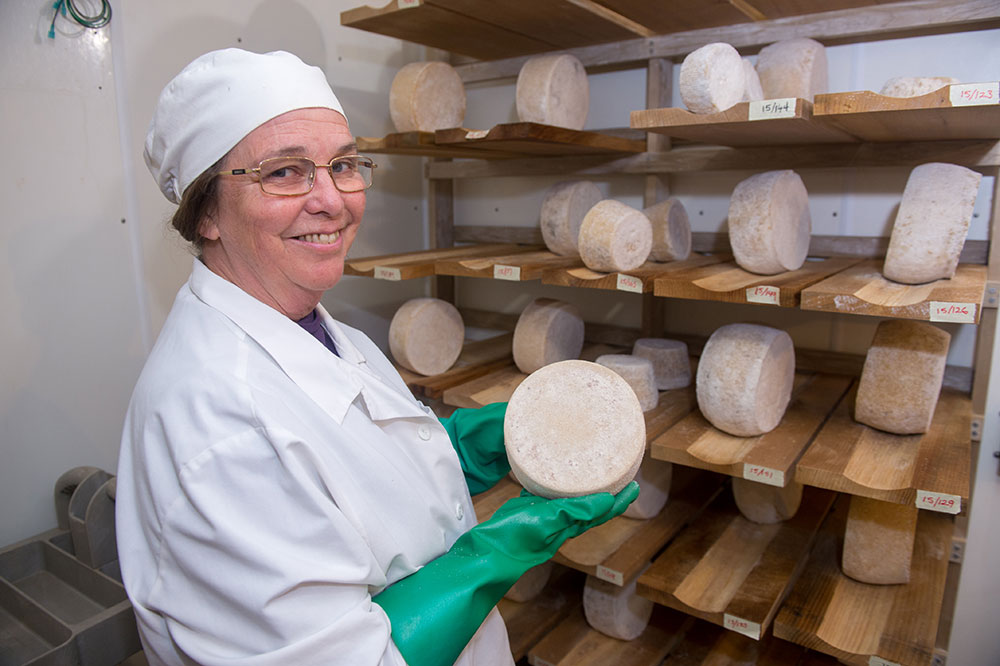Exploring Melbourne Made Cheese: Why Floridia Cheese Is a Must-Try
Exploring Melbourne Made Cheese: Why Floridia Cheese Is a Must-Try
Blog Article
Unlocking the Tricks of Artisanal Cheese Making: A Detailed Do It Yourself Guide
In the realm of culinary craftsmanship, artisanal cheese making stands as a testament to the delicate balance between tradition and development. As we get started on this trip to debunk the art of producing elegant cheeses, we are encountered with a tapestry of tricks and skills waiting to be unwinded.
Choosing the Right Milk
When starting the journey of artisanal cheese making, the selection of milk plays an important function in figuring out the high quality and features of the final product. The kind of milk picked affects the flavor, structure, and generally profile of the cheese. Raw milk, directly from the pet, is favored by numerous artisanal cheesemakers due to its one-of-a-kind mix of enzymes, microorganisms, and taste substances. Using raw milk comes with threats and policies, making pasteurized milk a more secure option for novices.
When picking milk for cheese production, it is very important to think about the fat web content. Higher fat web content in milk can lead to a creamier and richer cheese, while reduced fat content may lead to a drier and stronger appearance. Furthermore, the resource of the milk, whether from cows, goats, lamb, or buffalo, contributes unique tastes and attributes to the cheese (Melbourne Made Cheese). Each kind of milk brings its very own subtleties, enabling a wide variety of cheese varieties to be crafted based upon the picked milk. Eventually, the selection of milk is a fundamental decision that establishes the structure for a successful artisanal cheese-making undertaking.
Culturing and Coagulating
To initiate the cheese-making procedure, the crucial actions of culturing and coagulating need to be very carefully carried out to transform milk into curds and whey. The kind of culture made use of can dramatically influence the flavor, structure, and ripening of the final cheese product.

The timing and temperature control during culturing and coagulation are essential aspects that influence the last outcome of the cheese. Appropriate execution of these actions is crucial to make sure the desired appearance, flavor, and uniformity of the artisanal cheese being produced.
Draining Pipes and Pushing Curds
After the milk healthy proteins have coagulated and the curds have been cut to launch whey, the next crucial action in artisanal cheese making entails draining and pressing the curds to accomplish the wanted texture and consistency of the final cheese item. The time for draining can differ depending on the type of cheese being made and the desired wetness web content.
Pressing aids remove any type of remaining whey and compacts the curds to develop a strong cheese wheel. Correct pressing and draining are critical steps that considerably influence the high quality and attributes of the artisanal cheese being generated.
Aging and Flavoring Methods
Executing careful aging and flavoring techniques is crucial in boosting the deepness and complexity of artisanal cheeses, elevating their preference profiles to splendid levels of improvement and refinement. Aging plays an essential duty in creating the special flavors and appearances that distinguish artisanal cheeses. Throughout the aging process, cheeses are stored in carefully regulated atmospheres where factors such as humidity, airflow, and temperature level are manipulated to urge the growth of advantageous mold and mildews and bacteria. This regulated environment permits the cheese to grow gradually, establishing abundant flavors and intricate scents.
Flavoring methods likewise add considerably to the last preference of artisanal cheeses. Cheesemakers may select to present extra flavors by integrating active ingredients such as herbs, flavors, or also fruits right into the cheese during the manufacturing procedure. Additionally, some cheeses are washed or scrubed with numerous fluids, such as brine additional info or alcohol, to enhance their textures and flavors.
Wrapping and Keeping Cheeses

Final Thought
In conclusion, grasping the art of artisanal cheese making entails very carefully selecting the best milk, adhering to accurate culturing and coagulating procedures, draining pipes and pressing curds successfully, and utilizing different aging and flavor strategies. By complying with these actions faithfully and with attention to information, you can create your own tasty and one-of-a-kind cheeses in your home. Remember to cover and save your cheeses appropriately to make certain optimal flavor and texture development. Delighted cheese making!
Each kind of milk brings its own nuances, permitting for a vast check it out array of cheese selections to be crafted based on the chosen milk.After the milk healthy proteins have actually coagulated and the curds have been reduced to launch whey, the following crucial step in artisanal cheese making entails draining pipes and pushing the curds to accomplish the desired texture and uniformity of the last cheese item. The majority of cheeses must be wrapped in wax paper or cheese paper to permit them to breathe while safeguarding them from drying out. For cheeses that need to continue aging, such as bloomy peels or cleaned skins, ensure they are stored in a cool environment like pop over to this site a cheese cavern or a fridge established to the ideal temperature level. By paying interest to the wrapping and storage space of artisanal cheeses, cheese manufacturers and enthusiasts can preserve the honesty of these specials and fully appreciate their intricate tastes.
Report this page